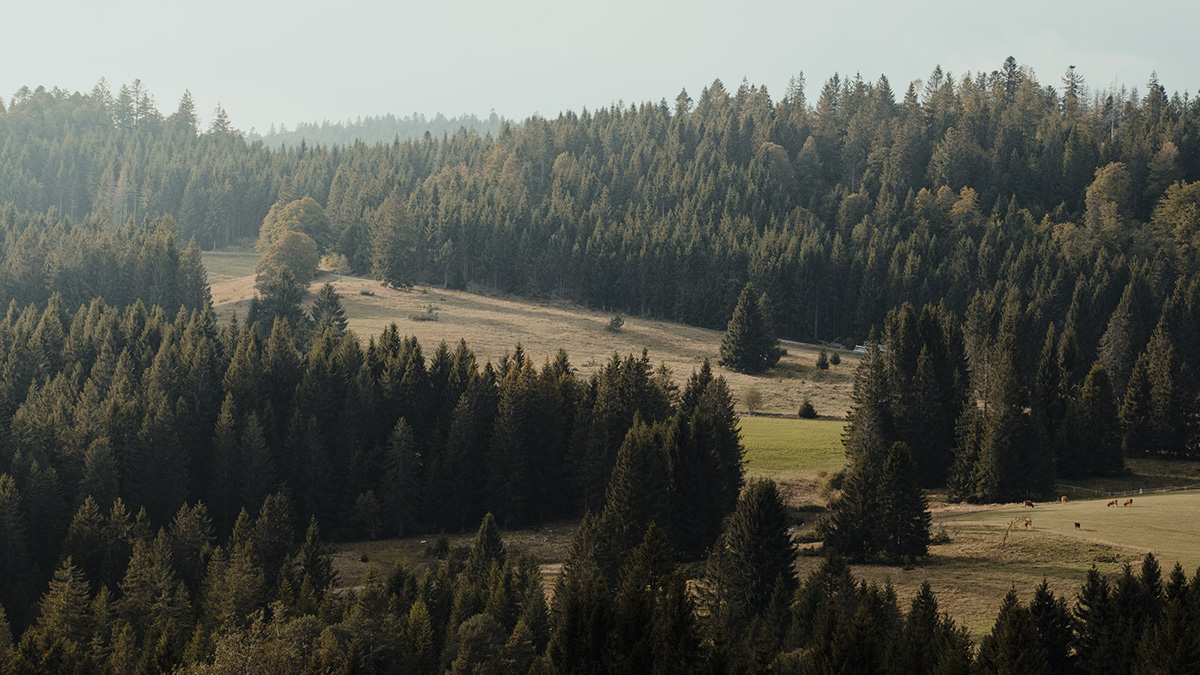Forests have a complex relationship with climate change. On the one hand, they absorb atmospheric carbon, even proliferating amid changing climates. On the other hand, they can suffer under higher heat stress, degrading their carbon sink capacity and drought resilience. With some $10.5 million in funding from the German Research Foundation, scientists in Europe are now going to instrument forests with novel sensors to better understand how woodlands are affected by changing climate.
Mixing forest science with Internet of Things (IoT) technology, drones, and other devices, EcoSense will try to shed light on the effects of climate change on the interactions between plants, soil, and the atmosphere. These interactions vary according to species, location, and forest stand, which refers to collections of trees in a forest that are fairly uniform in their age, size, distribution, and other factors. The EcoSense initiative will bring new technologies to forest monitoring following efforts such as Harvard University’s wired forest.
“We do not understand when and why climate extremes like heat waves or droughts drive single trees or forest patches beyond their tipping points.”
Specifically, the project will study abiotic and biotic processes of forest carbon and water exchange, how the ecosystem responds to environmental stressors, enabling the prediction of process-based changes in ecosystem function and sustainability, according to a project outline. Real-time sensor network data will be transferred to a database for analysis and deep learning simulation models to generate short- and medium-term predictions.
“Climate change has a huge impact on forest ecosystems already. We see an increase in tree mortality worldwide,” said Christiane Werner, a professor of ecosystem physiology at the Institute of Earth and Environmental Sciences at the University of Freiburg, pointing to the effects of the 2018 European drought on trees. “Currently, we have well-established models to predict overall ecosystem functioning under nonstressed conditions, but we do not understand when and why climate extremes like heat waves or droughts drive single trees or forest patches beyond their tipping points.”
Internet of Woody Things
The research team will instrument several hilly hectares of the Black Forest in southwest Germany, covering stands of pure beech, pure spruce, and mixed trees. Climate-driven changes to the forest may have wider repercussions; the woodland is of economic and touristic importance to Germany, famed for its traditional farmhouses, cuckoo clocks, and eponymous ham and cake.
The EcoSense tool kit could include carbon dioxide (COtwo) sensors, camera-equipped drones, and other devices. The team will initially deploy commercially available devices and then, from 2024, replace them with newly developed microsensors, some of which will be energy autonomous, according to Ulrike Wallrabe, a professor in the University of Freiburg’s Department of Microsystems Engineering.
“We want to measure fluxes of water, isotope-discriminated COtwo and volatile organic compounds and stress markers, mainly photosynthetic efficiency by chlorophyll fluorescence from soils up to atmosphere,” said Wallrabe. “The sensor network will comprise new, compact and, wherever possible, autonomous energy sensors that are to be developed in the project.”
Daniel Kneeshaw, a forest and climate change researcher at the University of Quebec in Montreal who is not affiliated with EcoSense, said the project is examining interesting parameters that should be useful to a wide variety of researchers.
“As the researchers suggest, what happens at a cellular scale when scaled up can have profound impacts across regions,” said Kneeshaw, adding he wants to know how EcoSense data will be scaled up and down. “Better understanding of the mechanisms will help us be better prepared for future changes. Having such networks around the world and getting scientists from the different networks to talk [about them] will lead to even more robust results and interpretations.”
The EcoSense project aims to begin publishing studies in 2023, but some groups affiliated with it have already started to release findings. For instance, one group including Werner published a paper on a wireless, autonomous chlorophyll fluorometer that measures photosynthesis efficiency in plants. With a 10-kilometer range, the novel device can be attached anywhere on a tree and is low power and relatively inexpensive.
In addition to its initial 4-year funding, EcoSense has an option of two 4-year extensions to gain a long-term perspective. The researchers have high expectations of significant results.
“Our special feature is the unique alignment of ecosystem research with microsystems technology. Distributed autonomous sensing principals will open a new door for ecosystem research,” said Werner. “We will gain an unprecedented cross-scale coverage, both at the spatial level, from leaf to forest, as well as in a temporal dimension, from minutes to years, of processes and interactions driving carbon and water fluxes, including stress markers as volatile organic compounds and chlorophyll fluorescence.”
—Tim Hornyak@robotopia), Science Writer
